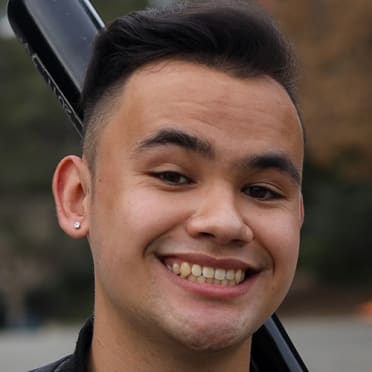Robert Stephenson reps Philippines with custom cleats
This story was excerpted from Justice delos Santos’ Pirates Beat newsletter. To read the full newsletter, click here. And subscribe to get it regularly in your inbox.
Robert Stephenson’s Mother’s Day gift arrived a couple days late, but his mom didn’t seem to mind in the slightest.
Ahead of the Pirates’ Asian American and Pacific Islander Heritage Night on Tuesday, Stephenson presented his mother, Rowena, with a pair of custom cleats that paid homage to his Filipino background.
The outside of the right cleat features the flag of the Philippines while the outside of the left cleat reads “Pangasinan,” the province where Rowena was raised until immigrating to the United States. The insides of both cleats also feature an outline of the Philippines with Pangasinan colored in gold. The laces of both cleats are gold as well, a homage to the eight-rayed golden sun of the Philippines flag.
The cleats were designed by Matt Speck, a Pittsburgh-based artist and muralist who has customized numerous baseball and football cleats for professional athletes both in and beyond Pittsburgh. Along with Stephenson, Speck has worked with Pirates such as David Bednar, JT Brubaker, Canaan Smith-Njigba and more.
“I’ve never done anything like this before, so I think it’s going to be pretty cool for me to show off that pride,” Stephenson said. “There’s not really that many out there from the Philippines, in general, or Filipino Americans who get to play professional baseball at the highest level. It’s cool to be able to showcase that and show everybody where my background is from.”
Prior to the Pirates’ AAPI Night, Rowena struggled to find the words to fully express the pride that comes with seeing her country, her province, her culture represented on baseball’s highest stage.
Rowena recalls growing up in a “really, really tiny barrio” where very few people made it out. During her youth, her family owned land and made their living growing rice. Rowena recalled the days where her parents would make lugaw, otherwise known as arroz caldo, a chicken rice porridge; Rowena’s parents consumed the soup while the kids got the rice and chicken.
In 1970, Rowena and her family immigrated to the San Francisco Bay Area -- Contra Costa County, to be exact. Here, Rowena had an opportunity to pursue an education, pursue a livelihood and, in time, raise a son who elevated to baseball’s highest stage.
For Rowena, growing up in the United States was not without its own challenges, the matter of race in American being among them. It wasn’t until about a decade ago that Rowena began having a true sense of pride in her identity. For much of her time in the United States, she felt the need to hide who she was in fear that she would be disrespected.
“Growing up, I couldn’t tell people what my ethnicity was,” Rowena said. “Back then, it wasn’t acceptable. You’re either white or you were the other. So, for me to be able to now say -- and proudly say -- that I’m 100 percent Filipino and that I was born there, and for him to represent that, it just means the world to me."
Now, Rowena has the opportunity to see her son embrace his heritage and continue the growing legacy of Filipino American athletes.
In 1956, Bobby Balcena became not just the first Filipino American to play Major League Baseball, but the first Asian American, period. Stephenson, who grew up in the Bay Area, recalled watching two-time Cy Young Award winner Tim Lincecum, far and away the best Filipino American baseball player of all-time. Currently, Stephenson, Anthony Volpe, Travis d’Arnaud and Kolten Wong are the only active Filipino Americans in Major League Baseball.
“I think it’s awesome for kids to see that and, depending on whatever [sport] they want to get into, they can have something to look forward to, something to pull inspiration from,” Stephenson said. “I think it’s really cool for them to have an idol to look up to.”
Stephenson is one of only a handful of Filipinos and Filipino Americans to ever play Major League Baseball, a game that dates back to the late-19th century. Not only is Stephenson playing at the game’s highest level, but he’s embracing his heritage, too. As Rowena thinks about her son’s place in the history of Filipino American athletics, she can’t quite find the words to fully express the range of emotions. She does know, however, what she felt.
“I’m getting goosebumps right now just thinking about it,” Rowena said.
